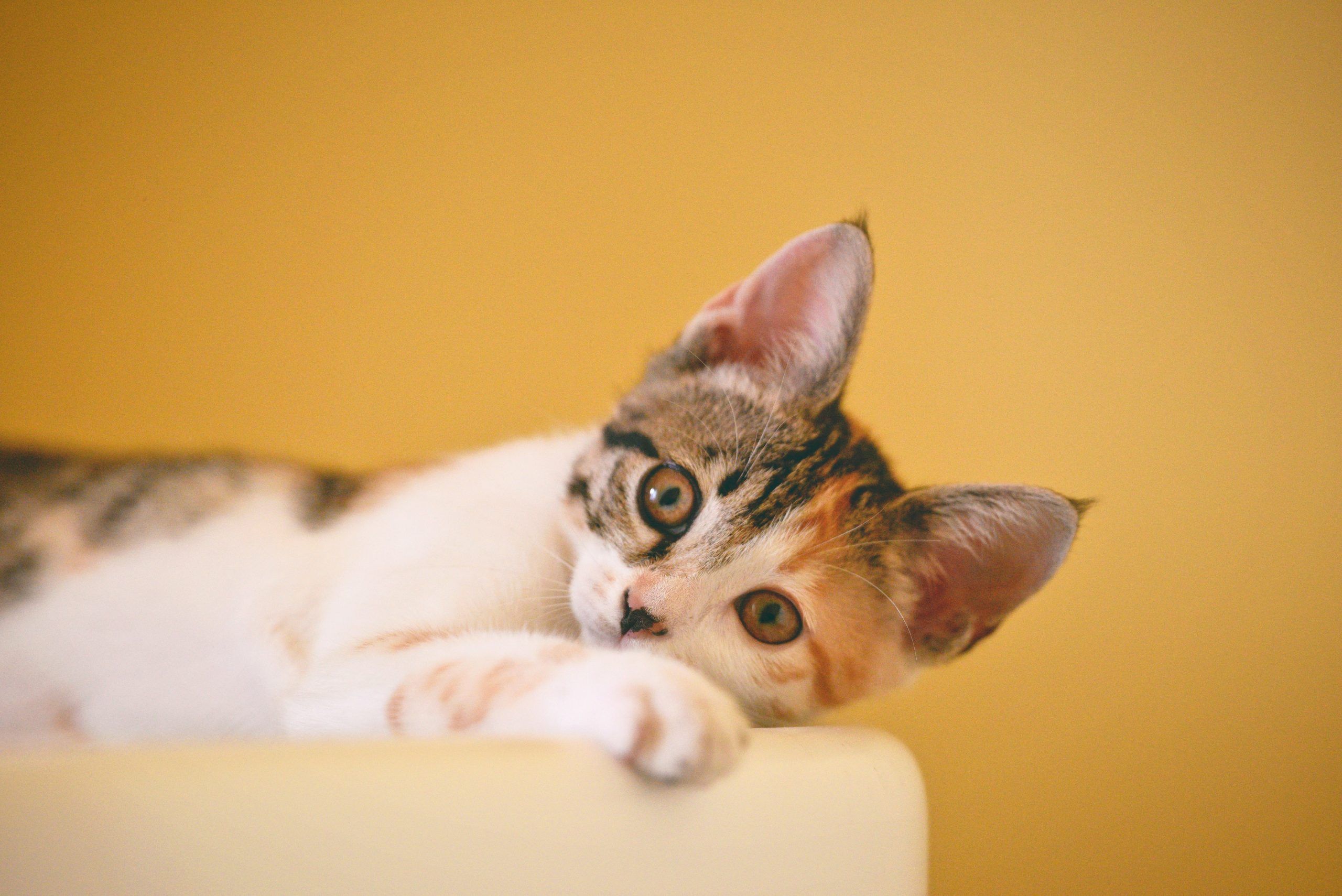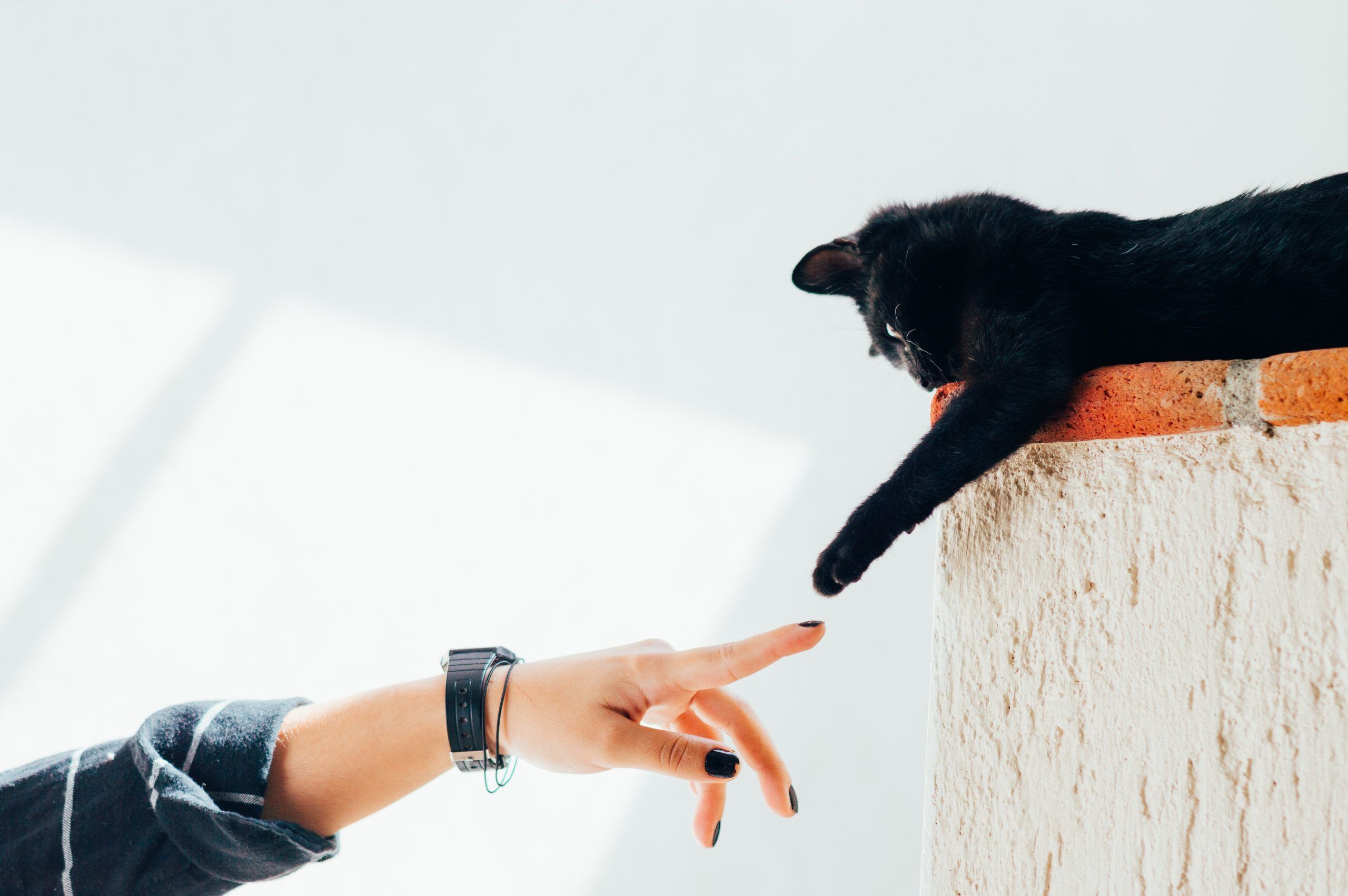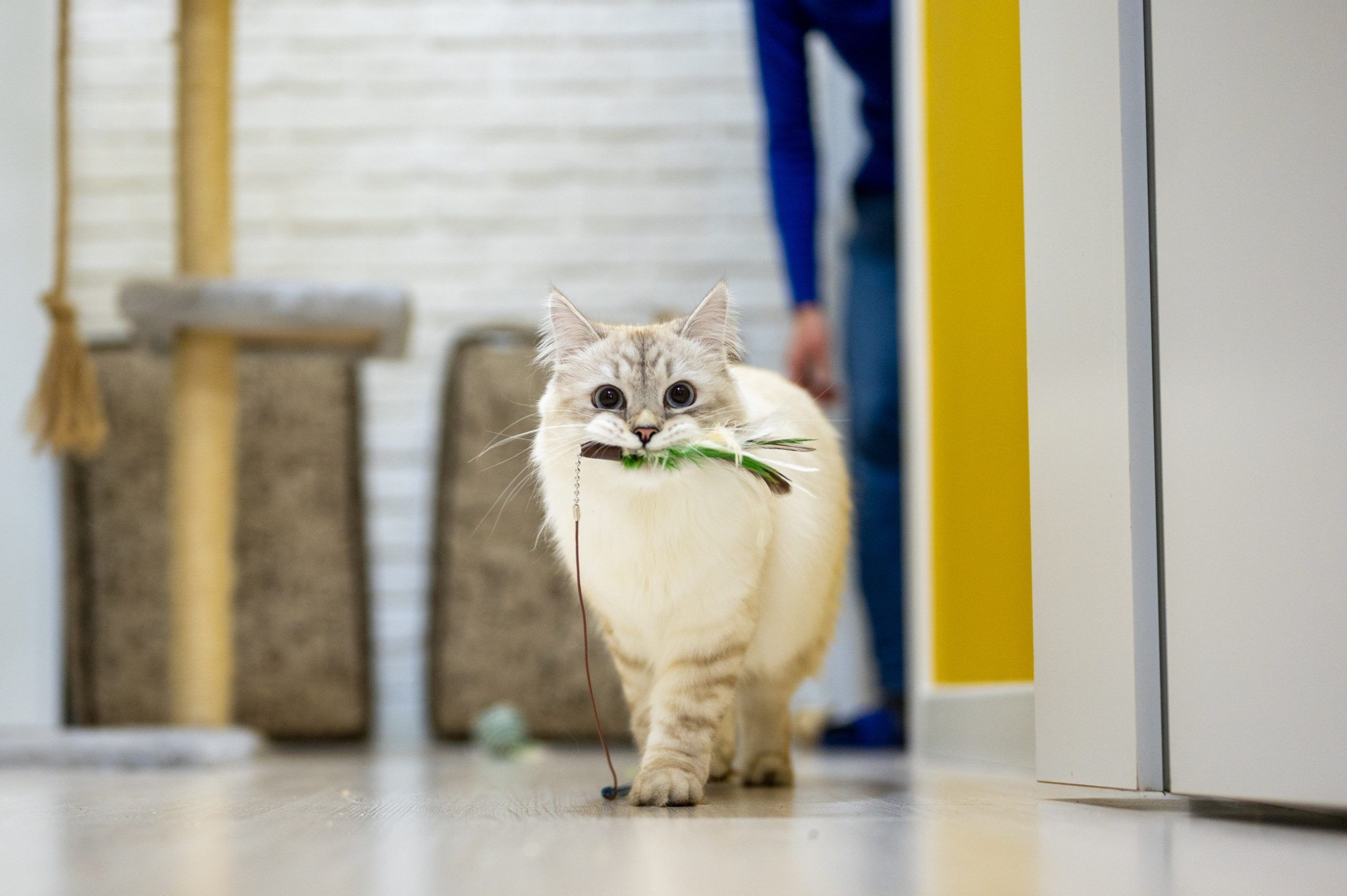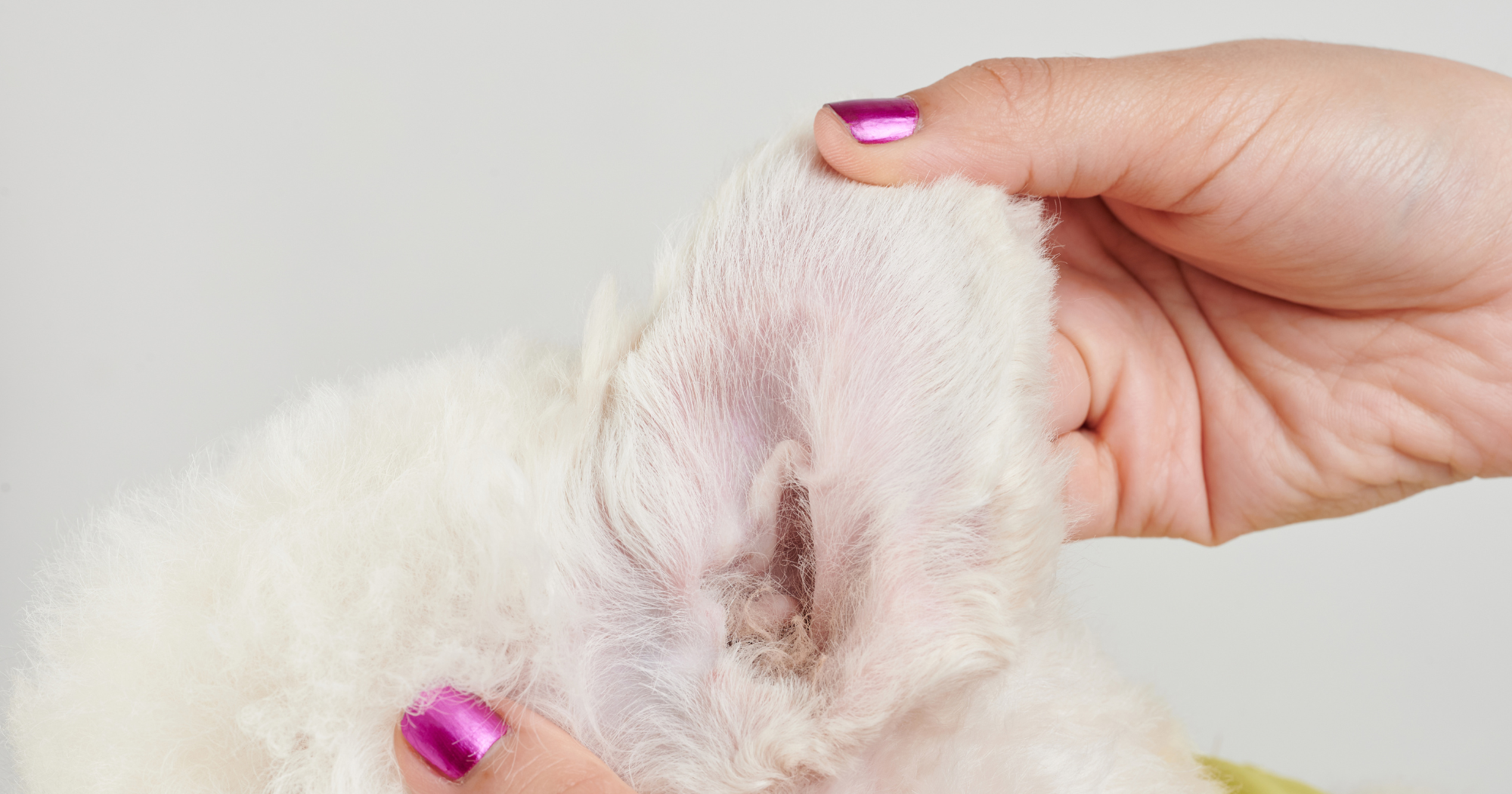
No, that’s not a typo. At first glance, cats may seem too independent to respond to their owner’s instructions. However, with a little persistence and patience, and some key cat training tips, they can be just as receptive to training as dogs!
Why is it important to train your cat?
By training your cat, there are a number of ways it can benefit both you and your pet. Not only does it give your cat plenty of mental and physical stimulation – something they need in order to stay fit and healthy – but it can also help curb undesirable behaviours, like scratching and biting. And perhaps most significantly, training can help you bond, by developing a deeper sense of mutual trust and understanding.
Things you need before training your cat
Before getting started on training your cat, you’ll need to invest in a few essentials.
Necessary items
- Cat treats – cats need motivation, so treats are the most important items for cat training. Stock up on yummy treats you know your cat will love, so you can use them as a reward for good behaviour.
- A clicker – this makes a gentle clicking sound, which you can train your cat to associate with a reward. Once this has been learnt, you can then move on to associating the same clicker sound with a new skill or behaviour. In this way, your cat will know to expect a reward if they follow your instructions after hearing the click.
- A target stick – this tool can be used to direct your cat’s attention towards something. For example, if you want them to go inside their carrier on their own, you can point towards it with your target stick and train them to follow it. It can also be used for teaching fun tricks, like jumping over your arm or leg.
Other things you might need
The above are the basics you’ll need for your training sessions. But if you’d like to go the extra mile, these things might come in handy.
- A mat – this can be used to show your cat that training is about to start.
- Stacking cups – these small plastic cups are a useful tool for teaching a number of fun skills, like giving a high-five or a fist bump.

Cat training tips
Start simple
Your first step should be training your cat to understand that the sound of the clicker equals a treat. Once you’ve established this, you can start on some simple skills, like teaching your cat to sit or come when called. As tempting as it may be, you don’t want to start with complicated tricks, as chances are this will result in both you and your cat giving up on the idea.
Reward straight away
For clicker training to be effective, you’ll need to click at the precise moment your cat performs the desired behaviour. And since the click is a promise of a reward, it’s important to give your cat a treat straight after clicking. If you leave too long a gap between these actions, your cat is unlikely to associate the reward with the behaviour you want, so make sure that treats are always within easy reach when training.
Find the right reward for your cat
You’ll need to whet your cat’s appetite with the right kind of treats if you want them to follow your instructions. But, just like humans, not all cats like the same things, so find out what entices them the most. Some cats might prefer squeezable treats, whilst others may like something chewy. Decipher what your cat sees as a valuable reward, and go with that.
Remove distractions
Cats easily get distracted when they’re surrounded by commotion, and even the slightest disturbance can break their focus. So if you want your cat to concentrate, you’ll need to eliminate any noises or other distractions nearby. Find a quiet space where it’s just you, your cat and your training equipment.
Keep training sessions short
Cats generally have a short attention span, especially when they’re kittens. So to stop your pet getting bored, limit training sessions to a maximum of 5 minutes each, particularly at first. Once you’ve gained confidence and your cat is responding positively, you can build up to longer. Generally, 15 minutes is plenty enough to accomplish your goal without your cat losing interest.
Train at the right time
Since cats often follow a regular routine of eating, playing, grooming and sleeping, you’ll want to fit your training sessions around their habits. Before mealtimes could be the right moment because those tasty treats will seem even more mouth-watering. Or you could try training after they’ve woken from a nap, as they’ll most likely not only be hungry, but also rested enough to focus.

Things to avoid when training your cat
A key point to keep in mind is that you shouldn’t punish your cat for bad behaviour. This won’t help – in fact, it could make the problem even worse. This is because instead of associating the punishment with what they’ve done wrong, cats are more likely to become anxious or scared of you or the place you’re training them in. Instead, training should be about positive reinforcement. So, when your cat engages in negative behaviour, redirect their attention to better habits. For instance, if your cat is scratching your furniture, train them to use a scratcher instead of trying to punish them.
Basic tricks to train your cat
There are a number of behaviours and tricks you can train your cat, with some being more elaborate than others. But as it’s always best to begin with the basics, start off by training your cat to sit on command and come when called, or even to give a high-five.
How to train your cat to sit
Training your cat to sit may sound tricky, but it’s actually quite simple. All you need to do is make sure that when your cat sits naturally, you use your clicker and reward them. This will help them realise that sitting equals a treat. Then, add in a hand signal and voice cue, and after some time your cat will learn to sit on command.
How to train your cat to come when called
Getting your cat to come to you when you call their name is a really useful skill, especially as it can be used to call your cat back to the house if they slip out or have been gone a while. The basic concept is using treats to entice your cat to come to you when you call their name and always rewarding them when this happens. Start when your cat is close by, and then build up to getting them to respond from further away.
How to train your cat to high-five
Training your cat to give a high five is done in a similar way to training them to sit. The trick is to keep a treat in your hand and encourage them to touch your hand on cue to get their reward. Once they’ve learnt this, repeat this step by gradually moving your hand higher, until your cat is consistently high-fiving when you show them your high-five hand.

How to address problem behaviours through training
Cat training can also help tackle behavioural problems in your pet, like jumping on furniture and scratching and biting. As mentioned above, punishing your cat is never the answer. The key is to identify the problem and use training to persuade them to behave more positively.
How to train your cat to stay off counters
If your cat is somewhere you don’t want them to be, it’s best to just calmly lift them off and place them gently on the floor, without making a fuss. Cats love to be up high, so you cat might be keen to jump on your counters to get a better view. To prevent this, give your cat access to plenty of other more appropriate elevated spaces, like cat towers, and lure them to these using treats, your target stick or a wand toy.
How to train your cat to stop scratching
If your cat is playing havoc with your furniture, direct their attention to their scratching post or another item that you don’t mind them scratching instead. However, if it’s you that your cat is scratching, you need to establish why they are doing this. Notice their body language. Maybe they don’t want to be petted right then? If so, steer clear until they’re more receptive of you. Or they could be trying to play with you. But it’s important for them to know that your hands are not toys to be clawed at. Train them to understand this by using toys to play with them instead of being too hands-on (pun intended).
How to train your cat to stop biting
Biting usually stems from the same issue – your cat either thinks your hands are toys, or they’re not in the mood for petting. Pay close attention to their behaviour and try to redirect their attention elsewhere using toys and treats.

FAQs
What cat treats should I use?
There’s no hard and fast rule for this – it depends what your cat is most attracted to. Your cat might respond well to treats or they may like the idea of wet food as a reward. It’s all about experimentation at first, so try different things and see what gives the best results.
What if my cat isn’t food motivated?
Most cats will respond to some kind of edible reward, so if your cat doesn’t seem to be interested in what you’re offering, you need to try a different kind of treat. If lickable treats aren’t working, switch to something with a crunchy texture. Or if your cat isn’t responding to meaty treats, give fish a go instead, or vice-versa.
How do I train multiple cats?
This can be done, but it can be a bit chaotic, so we’d recommend starting with one cat at a time. But if you’re up for the challenge, you’ll need a mat – this can be used for one cat to wait their turn on whilst the other is being trained. You’ll also need something to keep one cat busy whilst the other is focusing, such as a snuffle mat.
Useful Links:
ISPCA – Tips for Keeping Your Pets Engaged at Home
How to Stop Cats Scratching or Clawing in the House
Teaching Cat Tricks: 10 Tricks for Clever Cats
Tips on How to Train Your Kitten







